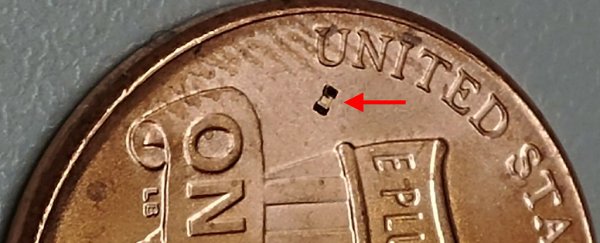Scientists have been able to operate a tiny, tumbling microrobot inside an animal colon for the first time, an innovation that promises all kinds of uses for medical monitoring and drug delivery.
What makes the little bot so useful is that it's fitted with a magnet so it can be piloted from outside the body using an electromagnetic field. While this was just a test run to prove it could be done, eventually the miniature explorer could be fitted with a payload.
The microbot has already proved itself in the dry and in the wet, and on different surfaces, and up and down inclines. The flipping action has been specifically designed so that the unpredictable landscape of the body can be navigated.
 (Purdue University video/Elizabeth Niedert and Chenghao Bi)
(Purdue University video/Elizabeth Niedert and Chenghao Bi)
"When we apply a rotating external magnetic field to these robots, they rotate just like a car tyre would to go over rough terrain," says mechanical engineer David Cappelleri, from Purdue University. "The magnetic field also safely penetrates different types of mediums, which is important for using these robots in the human body."
There's no battery, with everything powered by the same magnetic field that controls the bot, and the team was able to demonstrate the device going in either direction. Monitoring was done via ultrasound imaging.
The researchers used mice under anaesthetics as their test subjects, choosing the colon because there's an easy point of entry, as it were… and because the insides of the organ can get very messy as food and drink is digested.
"Moving a robot around the colon is like using the people-walker at an airport to get to a terminal faster," says biomedical engineer Luis Solorio, from Purdue University. "Not only is the floor moving, but also the people around you."
"In the colon, you have all these fluids and materials that are following along the path, but the robot is moving in the opposite direction. It's just not an easy voyage."
In other words, the microbot faced a tough challenge but came through with flying colours. The scientists didn't notice any kind of tissue reaction to the bot, which is a good sign.
Once the tiny robot has done its work, it's passed out of the body in the normal way along with the rest of the colon's waste.
Outside of the mouse, the team also tested the bot's ability to deliver a substance. When coated with a fluorescein dye and placed in a vial of saline, the microbot released it steadily over the space of an hour, and the hope is that in the future this dye can be replaced with drugs.
There's still a long way to go for the flipping bot though, and of course it also needs to be tested in humans, where several could be dispatched at once. Add it to the growing number of microbots that are being developed to do our bidding in and out of the body.
"From a diagnostic perspective, these microrobots might prevent the need for minimally invasive colonoscopies by helping to collect tissue," says biomedical engineer Craig Goergen, from Purdue University. "Or they could deliver payloads without having to do the prep work that's needed for traditional colonoscopies."
The research has been published in Micromachines.
